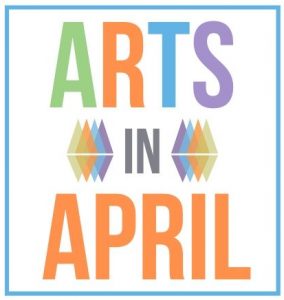What does an Arts Council do anyway? Part 4: Equity vs. Equality
Who We Are Wednesdays: What does an Arts Council do anyway?
There is a lynch pin to element to being any organization that serves the public good; Equity. In the last 15 years or so, it has grabbed the spotlight of conference talks, nonprofit CEO trainings, and shifted the funding focus for many foundations. How is it possible that a singular concept, born out of the 1970 social justice movement, can apply across all non-profit sectors and single handedly be responsible for the effectiveness of an organization’s efforts? To answer that question, we need to look at what the concept of equity is correcting.
Equity vs. Equality
These two words sound similar, look similar, and you know what they say; sounds like a duck, looks like a duck…but when it comes to real world application, these two ideas play out very differently.
Equality, by definition, means “the quality or state of being equal”.
Equity, by definition, means “justice according to natural law or right. specifically : freedom from bias or favoritism.
Amazing the difference two letters make. Equality as the ‘gold standard’ would simply mean that all Arts Councils were cookie cutter institutions, with a standard selection of programs offered, exactly the same way, for every community and person within that community, everywhere they were located. Thank goodness we don’t live in that wildly ineffective world. Now, we’re not suggesting that we’re capable of deciding what the natural law of things are, but we’re pretty good listeners, and through our community’s feedback we realized a while ago that we needed to start making some adjustments. That’s what working towards equity looks like in real life. It’s not a magical oasis destination that we’ll arrive at and be done with these conversations, because that’s not how humans live their lives. They constantly evolve. And while most institutions of the world are slow to change, many of them are waking up to the ramifications of ignoring the needs of the people they are supposed to be serving. ‘Business as usual’ is no longer acceptable. As ACNV works to become more aware of the needs of our community, we will make every effort to design programming that gets at the root of our elements of inequity, not just bandaid over them.
Adapting and Improving
Let’s look at one adjustment we made earlier this year; we decided to eliminate membership costs. The idea of membership to an organization as a way to show you support, or benefit in an exclusive way from the work they do, is an age old concept. We came to the realization, however, that we have fans who want to be a part of the united voice for the arts in Napa County, but can’t afford to be a member. Their desire to participate was no less valid or less appreciated than the support of our members who were fortunate enough to be in a more favorable financial situation. Something wasn’t adding up between this practise and our mission. The membership cost was an example of something called a ‘systemic barrier’, and being used to ‘the way things are’ tends to blind organizations like ours to them.
This realization sparked a change in course for ACNV. We began evaluating our other programming efforts, and are still doing so right now.
Sometimes removing barriers isn’t enough though. Sometimes what is needed is a bridge to opportunity, and that just happens to be one of our organization’s goals. The Creative Directory was born out of our desire to build bridges between our creative community and the public, government and businesses of Napa County. The equity round tables organized in partnership with the Napa County library that began in May and will continue over the Summer and into the Fall, are a result of our desire to align our efforts with other organizations in our community seeking to proverbially ‘level the playing field’ through equity in their programming too. We are investing in professional development of our staff, to educate ourselves about the biases in the way we think, and to critically examine our policies and practises.
We are not perfect. We know we will attempt programming and some of it will work, and some of it won’t. But we are listening, and watching, and hoping that our best guesses will elevate our creative community. We are always looking for feedback on our efforts. And if you would like to help us improve by getting involved in the work we do, please reach out to us. info@artscouncilnv.org Open communication is the only way we will successfully build a vibrant and more resilient creative community for tomorrow.

